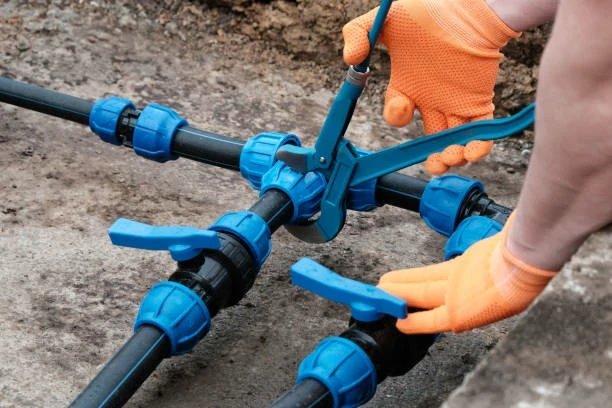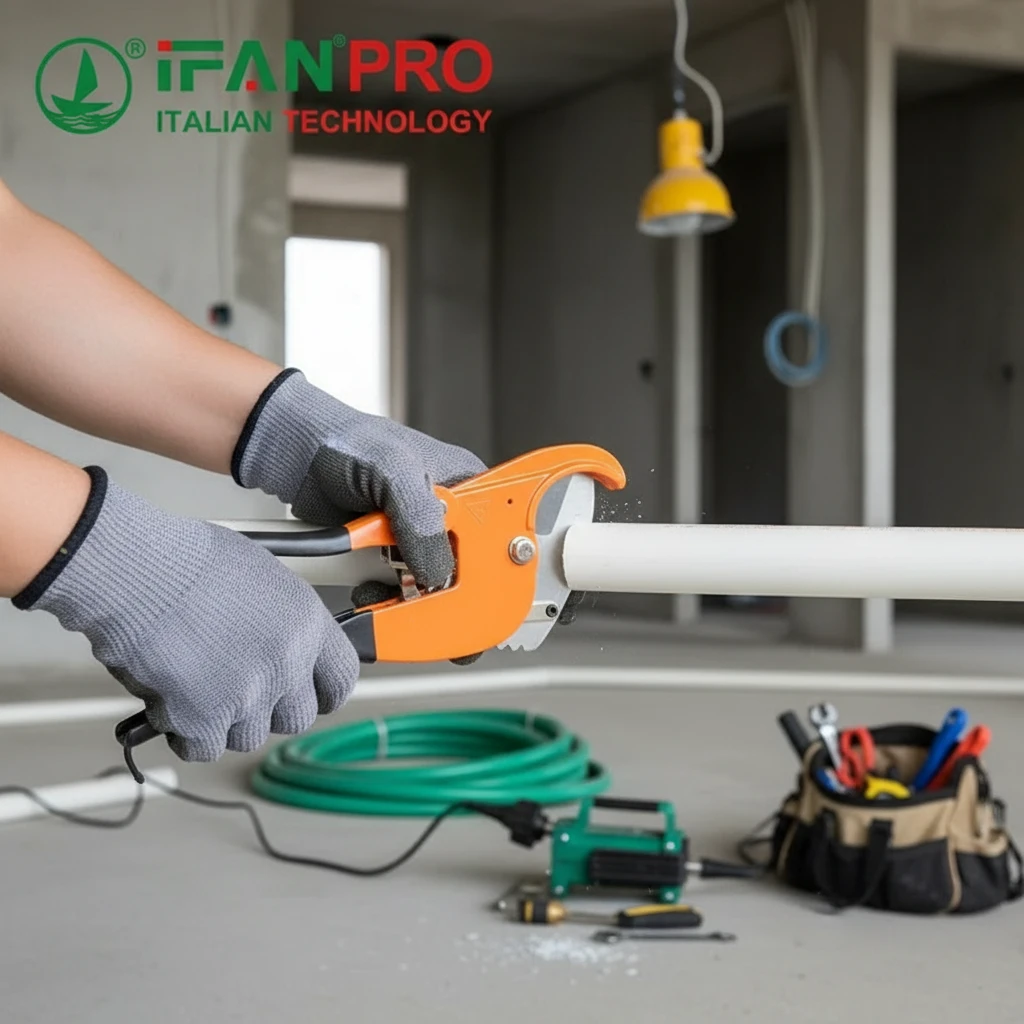High-Density Polyethylene (HDPE) fittings have transformed agricultural irrigation systems. Their strength, flexibility, and resistance to environmental factors make them ideal for efficient water management in farming. This article explores the advantages, applications, installation, and maintenance of HDPE fittings in agricultural irrigation.
Advantages of HDPE Fittings
Durabilidad
HDPE fittings demonstrate exceptional durability, capable of withstanding harsh weather conditions and high pressure. This robustness ensures that the fittings maintain structural integrity over time, reducing the risk of leaks and failures. Farmers can rely on them to provide consistent performance throughout the irrigation season.
Corrosion Resistance
Unlike metal fittings, HDPE fittings do not corrode when exposed to moisture or chemicals. This property allows farmers to use them in various applications without worrying about rust or deterioration. The fittings remain reliable and safe for transporting water, maintaining the quality of the supply.
Lightweight Design
The lightweight nature of them simplifies handling and transportation. Workers can easily maneuver these fittings during installation, reducing labor costs and time. This feature proves beneficial, especially in large agricultural fields where quick setup is essential.
Flexibilidad
HDPE fittings offer excellent flexibility, allowing them to adapt to different configurations in irrigation systems. This flexibility minimizes the number of fittings required and enables farmers to create custom layouts that suit their specific needs. It also helps reduce the risk of breakage during installation.
Resistencia química
HDPE fittings resist a wide range of chemicals, including fertilizers and pesticides. This characteristic ensures that the fittings maintain their functionality and do not react adversely with the substances transported through them. Farmers can implement HDPE fittings without concern for chemical interactions.
Applications of HDPE Fittings in Agriculture
Drip Irrigation Systems
Drip irrigation systems rely heavily on them. These fittings connect the mainlines to emitters, ensuring precise water delivery to each plant. This method promotes efficient water use, reduces waste, and minimizes the risk of overwatering. Farmers can optimize crop yield while conserving water resources.
Sprinkler Systems
HDPE fittings play a crucial role in sprinkler irrigation systems, connecting various components like pipes, valves, and sprinklers. Their ability to handle high pressure makes them suitable for delivering water across vast fields. Farmers appreciate the efficiency of them in maintaining consistent water distribution.
Subsurface Irrigation
Subsurface irrigation involves burying pipes below the soil surface, providing moisture directly to plant roots. HDPE fittings connect these underground systems, ensuring effective water transport. This method reduces evaporation and runoff, allowing farmers to conserve water and enhance soil health.
Water Distribution Networks
Farmers use HDPE fittings to create comprehensive water distribution networks within their fields. These networks transport water from storage tanks or pumps to different areas of the farm. The durability and flexibility of them enable farmers to design systems that cater to varying landscape needs.
Rainwater Harvesting
HDPE fittings facilitate rainwater harvesting systems, connecting storage tanks to irrigation lines. By capturing and utilizing rainwater, farmers reduce reliance on conventional water sources. This sustainable practice enhances water conservation efforts and promotes eco-friendly farming.
Installation of HDPE Fittings
Planning and Design
Effective irrigation starts with thorough planning. Farmers should assess the layout of their fields and determine the most efficient irrigation design. This planning includes selecting the right pipe sizes, fittings, and configurations based on the specific crops and land characteristics.
Site Preparation
Preparing the installation site involves clearing debris and leveling the ground. A stable and even surface ensures proper alignment and prevents shifting during operation. Inspect the soil conditions to ensure they can support the weight of the irrigation system.
Cutting the Pipes
Farmers should use a pipe cutter or saw to cut HDPE pipes to the required lengths. Clean and straight cuts facilitate proper connections, ensuring the fittings seal effectively. Smoothing rough edges helps prevent damage during installation.
Joining the Fittings
To connect HDPE fittings to pipes, use suitable joining methods:
- Electrofusion: This method uses electrical currents to heat the fitting’s internal coils, creating a strong bond between the fitting and the pipe. Follow the manufacturer’s instructions for temperature and timing.
- Butt Fusion: This method involves heating the ends of the pipes and fittings until they soften, then pressing them together. Proper alignment and pressure during fusion ensure a solid joint.
- Mechanical Fittings: For applications where fusion may not be practical, mechanical fittings offer an alternative. These fittings secure connections using clamps or bolts, allowing for easy disassembly if necessary.
Testing the System
After installation, conduct a pressure test to verify the integrity of the connections. Monitoring for leaks during this process is crucial. Address any issues before placing the irrigation system into service to ensure optimal performance.
Maintenance of HDPE Fittings
While HDPE fittings require minimal maintenance, regular inspections can enhance their lifespan:
Visual Inspections
Perform routine visual inspections to identify signs of wear or damage. Look for cracks, leaks, or deformation in the fittings. Early detection of issues helps prevent more significant problems and ensures the system operates efficiently.
Cleaning
Keep the fittings clean to prevent debris buildup that could obstruct water flow. Use mild detergents and avoid abrasive cleaners that may scratch the surface. Regular cleaning promotes optimal performance and extends the lifespan of the fittings.
Monitoring Environmental Conditions
Monitor environmental conditions around the fittings. In regions with extreme temperatures, ensure that the fittings remain protected from potential damage. Proper drainage around the installation site prevents water accumulation that could lead to erosion or instability.
Environmental Impact of HDPE Fittings
Using them in agriculture contributes positively to environmental sustainability. Their durability reduces the need for frequent replacements, minimizing waste generation. Additionally, HDPE is recyclable, allowing for responsible disposal at the end of its life cycle. Implementing HDPE fittings aligns with eco-friendly practices in agricultural irrigation.
List of Top HDPE Fittings Suppliers
| Company Name | Location | Years Of Experience | Certificates |
| IFAN | Zhuji, China | 1993 | ISO certification |
| ASC Engineered Solutions | USA | 2019 | ISO certification |
| Patel Precision Works | India | over 21 years | ISO certification |
| RED-WHITE VALVE CORP | USA | 1971 | ISO certification |
| SVF Flow Controls | USA | 1988 | ISO certification |
IFAN international standard for HDPE Fittings
IFAN’s standards for HDPE fittings include several important specifications, such as ASTM D3035 and ASTM D3350, which focus on the dimensions and materials of polyethylene piping. Additionally, the ISO 4427 Series and EN 12201 Series standards provide guidelines for the performance and safety of these systems. Other relevant standards include DIN 8074/8075, GB/T 13663 Series, AS/NZS 4130, JIS K6760, BS 6572, and CSA B137.1. Together, these standards ensure the reliability and quality of HDPE fittings across various applications and regions.
Conclusión
HDPE fittings play an essential role in modern agricultural irrigation systems. Their durability, flexibility, and resistance to corrosion make them ideal for efficient water management. By understanding the benefits, installation processes, and maintenance requirements of HDPE fittings, farmers can optimize their irrigation systems and enhance crop yields while conserving valuable water resources. As the demand for sustainable farming practices continues to grow, HDPE fittings will remain a vital component in achieving these goals.
Conectar
IFAN es un fabricante chino de tuberías, accesorios y válvulas de plástico con 30 años de experiencia. Si está interesado en IFAN accesorios de cobre, válvulas de cobre, tuberías y accesorios de plástico, póngase en contacto con nosotros. IFAN le ofrece una variedad de tuberías estándar para satisfacer sus necesidades específicas. Haga clic a continuación para obtener más información sobre la amplia gama de productos de válvulas y productos relacionados con sistemas de tuberías asequibles y rentables de IFAN.
Responderemos a su correo electrónico o fax en 24 horas.
Puede llamarnos en cualquier momento si tiene alguna duda sobre nuestra producción.
Para más información, visite nuestra página web https://ifanpro.com/
Pls Mailto: [email protected]
Whatsapp: + 86 19857948982














Comentarios recientes